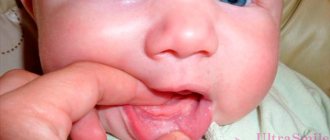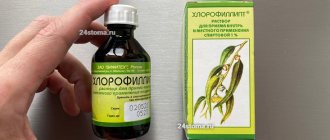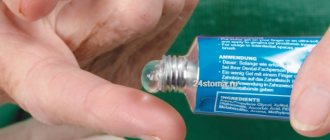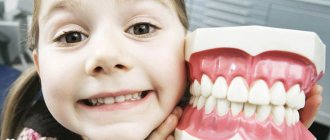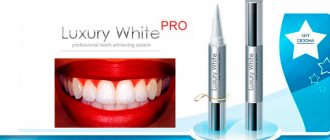Composition of Malavit solution for gums
Doctors classify the drug as a dietary supplement that contains a large amount of healing substances. Malavit combines the beneficial properties of an antiseptic and a remedy. Therefore, it is recommended as an adjunct to general therapy in dentistry, surgery and mycology. Thanks to the large number of natural ingredients, antimicrobial, refreshing and antifungal qualities are highlighted.
Malavit solution for gums
Malavit for gums contains a whole “bouquet” of natural vitamins and organic acids. The following plants are responsible for the beneficial properties:
- Siberian cedar: its resin is used, enriched with carotenes and bioflavonoids. This is a mild antiseptic that quickly destroys fungi and bacteria after the first use.
- Pine buds: help remove pus and plaque, clean and disinfect the mucous membranes in the mouth. Saturate cells with vitamins and oils, restoring their elasticity.
- Extract from birch buds: responsible for fresh breath and a pleasant aftertaste on the tongue. Promotes the healing of wounds and micro-cuts that remain after wearing prostheses or operations.
- Chaga mushroom: a useful plant has long been known for its unique properties. Its extract helps accelerate gum regeneration and reduces painful swelling during inflammation or suppuration. Contains a huge amount of B vitamins, potassium and selenium. It is a true antioxidant that soothes the inner surface of the mouth.
The liquid base of the Malavit solution for gums is a decoction of medicinal herbs that are widely used in dentistry: sage, elecampane, oak bark extract. Peppermint removes unpleasant odors and refreshes enamel, giving it a slight shine. Echinacea increases local immunity and prevents the proliferation of pathogens of many gum diseases. Glycerin in the composition of the drug is responsible for the softness and health of the mucous membrane, enveloping it with an invisible film and protecting it from damage.
Lichen planus is a chronic polyetiological disease with rashes of papules on the mucous membranes and skin. Isolated lesions of lichen planus of the oral mucosa are observed in 75% of cases. This is one of the most common diseases of the oral mucosa.
The appearance of lichenoid rashes in the oral cavity is usually associated with emotional stress, neuropsychic shocks, and negative emotions. Disturbance of neuroendocrine regulation (early onset of menopause) is important.
The erosive-ulcerative form of lichen planus of the oral mucosa, being a precancerous disease, requires close attention and qualified treatment from the dentist. If a dentist identifies a total lesion of the oral mucosa with an erosive-ulcerative form of lichen planus, the patient is referred for inpatient treatment to a skin disease clinic.
In the hospital, as a rule, the patient receives large doses of corticosteroid drugs and other medications by mouth. At the same time, less attention is paid to the local treatment of erosive and ulcerative lesions of the oral mucosa [1-6].
The purpose of the study is to develop an effective method for treating the erosive-ulcerative form of lichen planus in a clinic with total damage to the mucous membrane of the oral cavity, gums and lips.
Material and methods
Clinical examination and treatment of patients was carried out at the Department of Diseases of the Oral Mucosa of the Department of Hospital Therapeutic Dentistry, Periodontology and Geriatric Dentistry.
We observed 7 patients (1 man and 6 women) aged from 46 to 71 years with an erosive-ulcerative form of lichen planus (see table).
Complaints upon admission
Patients complained of an unusual appearance of the oral mucosa, loss of taste, burning sensation, pain when eating and brushing teeth, roughness and tightness of the oral mucosa.
All patients had anxiety-hypnotic syndrome, negative psycho-emotional states with a tendency to depression, and cancerophobia. The disease progressed with alternating periods of remission and exacerbation. Exacerbation was always preceded by stress.
When examining the skin of 3 patients, single papules were revealed on the skin of the forearms of the hands. When examining the oral mucosa, multiple papular rashes were revealed on the dorsal surface of the tongue, the mucous membrane of the cheeks, lips, and the vestibular surface of the gums (Fig. 1, 2).
Figure 1. Lichen planus, erosive-ulcerative form. Patient A., 52 years old.
Figure 2. Lichen planus, erosive-ulcerative form. Patient B., 46 years old.
On the mucous membrane of the transitional folds of the cheeks and the ventral surface of the tongue, against the background of bright hyperemia, sharply painful extensive erosions and ulcers were detected (Fig. 3)
Figure 3. Lichen planus, erosive-ulcerative form. Patient G., 68 years old.
Treatment method
The essence of the method lies in the combined use of steroid drugs - both as a general course (prednisolone) and locally (diprospan). A set of therapeutic measures was carried out in the oral cavity. In addition, after consultation with a neuropsychiatrist, patients were prescribed daily antidepressants: fluoxetine 20 mg, 1 capsule in the morning or Cipralex - 10 mg, 1 tablet in the morning.
The course of treatment with antidepressants depended on the duration of the disease, the severity of psycho-emotional changes and was 3-6 months.
Successful treatment of patients in our group without prescribing oral prednisolone is currently not possible. But our task was to use this drug in gentle doses.
This scheme was proposed earlier by Prof. A.L. Mashkelleyson:
1. Prednisolone 0.005 g
Regimen: 1st week - 4 tablets per day, every other day;
2nd week - 3 tablets per day, every other day;
3rd week - 2 tablets per day, every other day;
4th week - 1 tablet per day, every other day.
2. Delagil 0.25 g 1 tablet 2 times a day, daily, course 4 weeks.
3. Vitamin PP 0.05 g 1 time per day, after meals, course 4 weeks.
4. Vitamin A, oil solution, 8-10 drops on rye bread 2 times a day, course 4 weeks.
Local treatment
We attached significant importance to this stage of treatment. Traumatic factors were eliminated, hygiene correction, professional hygiene, and replacement of prostheses made of dissimilar metals were carried out. Candidiasis was excluded. Antiseptic treatment of erosions and ulcers was carried out, followed by rubbing in prednisolone ointment, and after 10 minutes - Cholisal or Kamistad gel.
With preliminary premedication (sedatives, antihistamines), diprospan 1 dose and 4 ml of a 2% lidocaine solution (without a vasoconstrictor) were administered under elements of damage to the oral mucosa (foci of exudation and hyperemia, erosion, ulcers) with an insulin needle.
If necessary, the injection of diprospan was repeated after 4-6 weeks.
Characteristics of drugs
1. Cipralex, fluoxetine
Daytime antidepressants. Eliminate depressive reactions of various origins, panic disorders, anxiety, phobias. Helps improve mood.
The therapeutic effect develops after 3-4 weeks of continuous use. Does not cause sedation.
Fluoxetine
20 mg, 1 capsule in the morning, regardless of meals. Then the dose is gradually increased to 2 capsules - taken twice in the morning. The course of treatment is 3-6 months.
Cipralex
- 10 mg, 1 tablet in the morning.
2. Diprospan
Diprospan* is a glucocorticosteroid drug. International (nonproprietary) name: betamethasone*.
, Belgium.
Dosage form: suspension for injection. 1 ml of diprospan suspension contains 6.43 mg of betamethasone dipropionate and 2.63 mg of betamethasone sodium phosphate. The combined composition of the drug has significant advantages when used in clinical settings. One of the components of the drug (betamethasone sodium phosphate) is highly soluble and easily absorbed from the injection site, which provides an anti-inflammatory and analgesic effect within 1-3 hours. The other component of the drug (betamethasone dipropionate) is poorly soluble and is slowly absorbed from the depot formed at the injection site. The latter ensures a prolonged (up to 4-6 weeks) effect of the drug after administration.
Diprospan has high glucocorticosteroid activity, but unlike its predecessors (hydrocortisone, prednisolone, kenalog) it has a number of advantages:
- slight mineralocorticosteroid effect, rapid and at the same time prolonged powerful anti-inflammatory and analgesic effect;
— does not cause local fine-crystalline reactions;
- does not have a local degenerative effect on tissue;
- prescribed both once and repeatedly (if indicated).
3. Prednisolone
- a synthetic analogue of the steroid hormone of the adrenal cortex hydrocortisone. Glucocorticosteroids have anti-inflammatory, desensitizing, antiallergic, antishock and antitoxic effects.
Prescribed for neurodermatitis, dermatoses, eczema, allergic shock, etc. When treating the erosive-ulcerative form of lichen planus, it is used in combination with delagil. Prescribed with 2.5 mg and gradually reduce the dose until the drug is completely stopped.
Release form: tablets containing 0.001 g and 0.005 g of prednisolone.
4. Hingamin (delagil)
- antimalarial drug. Chingamine quickly causes the death of asexual erythrocyte forms of all types of plasmodium. The spectrum of action of hingamine is not limited to the effect on malarial plasmodium. It has an inhibitory effect on the synthesis of nucleic acids, the activity of certain enzymes, and immune processes. As a result, the drug has found wide use in the treatment of collagenosis (systemic lupus erythematosus, scleroderma, rheumatoid arthritis) and dermatoses (lichen planus). The drug is well and quickly absorbed and slowly released from the body.
Release form: tablets of 0.25 g; powder; ampoules of 5 ml of 5% solution.
In the treatment of erosive-ulcerative forms of lichen planus, it is used in combination with steroid drugs, 0.25 g 2 times a day for 1 month.
5. Nicotinic acid (vitamin PP, vitamin B3)
- belongs to the B vitamins. Nicotinic acid plays a significant role in the life of the body. It is a prosthetic group of codehydrase enzymes I and II, which act as hydrogen carriers and take part in redox processes.
Nicotinic acid is prescribed to normalize redox processes in the body and dilate blood vessels. For these purposes, vitamin PP is prescribed in the treatment of lichen planus.
Release form: powder and tablets of 0.05 g and ampoules containing 1 ml of 0.17% sodium nicotinate solution, which corresponds to 0.1% nicotinic acid. When treating lichen planus, vitamin PP is prescribed 0.05 g 1-2 times a day after meals for 1 month. Also injections of vitamin PP solution under the affected elements.
When using nicotinic acid orally on an empty stomach, redness of the face and upper half of the body, and dizziness may occur. Persons with hypersensitivity to nicotinic acid should be prescribed nicotinamide.
6. Retinol (vitamin A)
normalizes metabolic processes in the epithelium, the function of cell membranes, stimulates the regeneration of epithelial cells.
Vitamin A is found in animal products (butter, egg yolk, liver).
The daily requirement for vitamin A is 1.5 mg, or 5000 IU, for an adult.
When treating lichen planus, 8-10 drops of an oil solution of vitamin A are prescribed orally 2-3 times a day for a course of 1.5 months; locally in the form of applications of an oil solution of vitamin A to the affected areas 2-3 times a day for 15 minutes for a course of 1.5 months.
7. Oral gels Cholisal, Kamistad
Anti-inflammatory, analgesic effect.
Treatment results and discussion
After completion of the course of treatment, the patients had no complaints. When examining the oral mucosa, the disappearance of foci of exudation, hyperemia, complete epithelization of erosions, ulcers, and a significant decrease in lichenoid rashes were noted (Fig. 4).
Figure 4. Lichen planus, erosive-ulcerative form. Patient B., 46 years old. After treatment.
In 2 patients, due to stress, an exacerbation occurred 1-1.5 months after treatment (exudation, hyperemia and single small erosions appeared on the mucous membrane of the cheeks). These patients received a repeated course of general and local treatment.
When examining a group of patients 6 months after completion of the course of treatment, there were no complaints. Single papules were detected on the unchanged oral mucosa. The psycho-emotional state of the patients improved noticeably.
The treatment method we offer avoids hospitalization, which is a significant advantage. In addition, the effectiveness of local administration of diprospan makes it possible to prescribe gentle doses of prednisolone and reduce the risk of complications.
With local administration of diprospan with lidocaine, pain symptoms are quickly eliminated, which, in combination with the effect of daytime antidepressants, leads to a noticeable improvement in the psycho-emotional state of patients.
Thus, the effectiveness of treatment of the erosive-ulcerative form of lichen planus with total damage to all parts of the oral mucosa increases significantly due to the combined use of steroid drugs, as well as local therapeutic measures in the oral cavity. Our experience confirms the real possibility of treating patients with this disease in a clinic setting.
What does the drug look like: release form
The drug can be found in several forms. In dentistry, preference is given to a concentrated solution, which has a viscous consistency and a dark brown tint. The liquid has a characteristic herbal aroma and is available in 30 or 50 ml bottles. Normally, it may contain a small sediment and become cloudy after shaking.
Malavit is produced by a domestic company that uses only proven raw materials from the Altai foothills. Due to the large number of components, be sure to read the instructions included with the bottle. This will help avoid allergies and exacerbation of diseases.
How to use Malavit for gums
The product is a concentrate, so it can only be used in diluted form. In dentistry, there are several options for preparing a liquid composition. They differ depending on the disease, the presence of open wounds and irritations, and the age of the patient. In case of exacerbation of periodontal disease, it is better to make applications and compresses. To do this, Malavit is diluted with pure glycerin in a ratio of 1 to 2. Long tampons are rolled out of cotton wool and bandages. They are dipped in the prepared liquid and applied to the inflamed areas, leaving for 30 minutes.
After a painful molar tooth extraction, you should not do active rinsing in the first day, so as not to wash out the blood clot. Therefore, it is recommended to carry out oral baths. For them, Malavit is diluted in a concentration of 1 to 20 parts. Take several large sips of warm solution into your mouth and hold it for at least 3-5 minutes. The procedure is repeated at least 5 times a day to relieve swelling and destroy all dangerous microbes.
If a person has injured the mucous membrane with hot food, burned by coffee or a chemical, Malavit will help quickly restore the gums and improve damaged blood circulation. To do this, 1 cap of the drug is mixed with 3–5 tablespoons of sea buckthorn oil. It is rubbed into the mucous membrane with careful movements, trying not to tear off the damaged skin. Treatment is complemented by rinsing with soda and decoctions of chamomile, sage, oak bark or St. John's wort.
To prevent inflammation after installing a prosthesis, it is enough to moisten your mouth with a light solution prepared from a cup of warm water and 1 small spoon of Malavit. This solution is used to treat the gums to give freshness to the breath. In babies, such a remedy perfectly prevents thrush and helps eliminate inflammation during the eruption of baby teeth.
Features of treatment
The bottle must be shaken before using the product. A small sediment may be present in the elixir. Therefore, after shaking, the solution may become cloudy.
Treatment of the damaged area of skin with the solution is carried out using a cotton sponge. To enhance the effect, it is necessary to additionally cover the damaged area with polyethylene and bandage it. Application duration is from 20 minutes to 3 hours. It depends on the degree of damage and the type of specific disease.
Warming compresses are also effective. To do this, the sore spot is warmed up using a heating pad or rubbing. After that, make a compress in the usual way.
When carrying out processing, you must adhere to the following recommendations:
- In the absence of violations of the integrity of the skin and mucous membranes, it is allowed to use undiluted product.
- If there are lesions on the skin and mucous membranes, the concentrated solution should be diluted with water.
Other recommendations:
- When treating ENT diseases, dilute 5-10 drops of the elixir in 100 ml of water. The resulting solution is used to rinse the nasal passages or use it as nasal drops or gargles. Procedures are performed 3-5 times a day.
- When treating catarrhal otitis, 5 drops of the product are diluted in a teaspoon of water. The resulting solution is slightly heated and a cotton swab is moistened in it, which is placed in the ear canal. The procedure is performed 4-6 times a day.
- To normalize the vaginal microflora, douching is carried out with a solution, which is prepared at the rate of 2 teaspoons of concentrate per glass of water.
- When treating dental pathologies, the mouth is rinsed with a solution prepared from 7-10 drops diluted in a glass of water.
You can get acquainted with other recommendations by studying the instructions for using the hygiene product.
Precautions and contraindications
Malavit is one of the few herbal preparations that is approved for use in pregnant women in any trimester. It does not contain alcohol or aggressive components, so it will not harm the fetus. Before use in infants of the first year of life, it is necessary to consult a supervising pediatrician. But we should not forget about the large number of vegetable oils and organic compounds that can trigger allergies. The patient should stop treatment with the solution if:
- small red rash in the mouth;
- gums are very itchy and painfully itchy;
- swelling spreads to the larynx and nasopharynx.
Therefore, it is recommended to first do a wrist test to identify the allergen: a few drops are rubbed into the skin on the hand, monitoring the reaction after 15 minutes. If the product is not suitable, it can be replaced with a similar plant-based one: Stomatophyte, Chlorophyllipt or Tonzinal.
